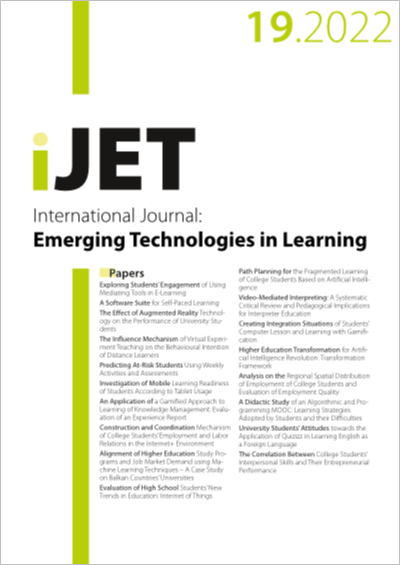Construction and Coordination Mechanism of College Students’ Employment and Labor Relations in the Internet+ Environment
DOI:
https://doi.org/10.3991/ijet.v17i19.34517Keywords:
Internet environment, college students’ employment and labor relations, spatial Durbin modelAbstract
Revealing the law of two-way selection between college students and employers is of great value to the proper construction of college students’ employment and labor relations and the coordination of employment issues. So far, there has been little research on the feasibility testing of building a harmonious employment and labor relations network for college students and on the coordination countermeasures for employment issues. To this end, this paper studies the construction and coordination mechanism of college students’ employment and labor relations in the Internet+ environment. Firstly, the spatial autocorrelation of the distribution of college students’ employment and labor relations was checked based on Moran’s I index, and a random effect spatial Durbin model was constructed based on the employment data of college students in the study region within the study period to study and analyze the spatial effects of colleges and majors on the construction of college students’ employment and labor relations in the region. Then, based on the simple graph neural network theory, a representation learning method was put forward for college students’ employment and labor relations network, and the employment and labor relations of college students was built through full utilization of the implicit structural similarity existing in the known employment and labor relations network of college students. The experimental results verified the effectiveness of the proposed construction method.
Downloads
Published
How to Cite
Issue
Section
License
Copyright (c) 2022 Nan Zhang (Submitter); Baike Zuo, Juan Gao

This work is licensed under a Creative Commons Attribution 4.0 International License.


